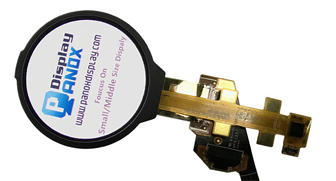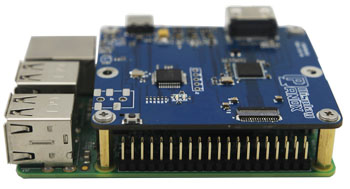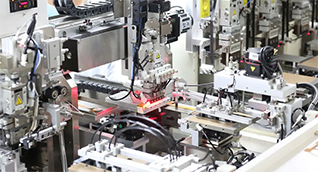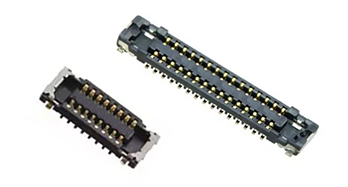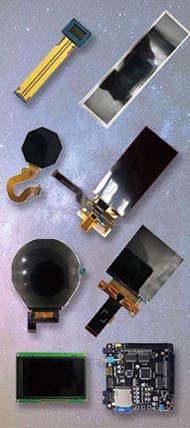A controller board in a car, often called an Electronic Control Unit (ECU), serves as the vehicle’s brain, managing and regulating various systems such as the engine, transmission, brakes, safety, and convenience features to ensure optimal performance, safety, and comfort. Also check: Micro OLED
What Does a Controller Board Do in a Vehicle?
A controller board in a vehicle processes data from sensors and sends commands to control systems like the engine, transmission, brakes, and body functions. It continuously monitors conditions, optimizes performance parameters, and enhances vehicle safety and efficiency through precise, automated control.
Controller boards operate by receiving sensor inputs, processing this data using embedded software, and outputting commands to actuators that adjust mechanical and electrical components. This real-time management ensures smooth operation, better fuel efficiency, and improved emissions control, essential for modern vehicle performance.
How Does a Controller Board Improve Engine Performance?
The Engine Control Module (ECM), a central controller board, optimizes engine performance by adjusting fuel injection, ignition timing, and air-to-fuel ratios based on continuous input from engine sensors. This dynamic adjustment maximizes power, reduces emissions, and improves fuel economy.
By analyzing sensor data such as engine speed, temperature, and oxygen levels, the ECM fine-tunes ignition and injection timing thousands of times per second, ensuring the engine operates efficiently under all driving conditions.
Which Systems in a Car Rely on Controller Boards?
Many critical vehicle systems depend on controller boards, including:
-
Engine and transmission control for smooth power delivery and gear shifts.
-
Anti-lock Braking System (ABS) to prevent wheel lockup.
-
Electronic Stability Control (ESC) to maintain vehicle stability.
-
Airbag deployment systems.
-
Body Control Module (BCM) managing lights, windows, and climate.
-
Advanced driver-assistance systems (ADAS) like adaptive cruise control and lane-keeping assist.
Controller boards coordinate complex systems to improve safety, comfort, and drivability.
Why Are Controller Boards Essential for Vehicle Safety?
Controller boards enhance safety by actively managing braking systems, stability control, and airbag deployment. They quickly interpret sensor data during critical moments—such as sudden braking or collisions—and respond to prevent accidents or reduce injury by activating ABS, ESC, and airbags at the right moment.
This proactive control provides drivers with better handling under emergency conditions and ensures appropriate safety measures engage instantly.
How Do Controller Boards Manage Transmission Shifts?
The Transmission Control Module (TCM) controls automated gear shifts by processing data about engine speed, throttle position, and vehicle load. It times gear changes for smooth acceleration and fuel efficiency, preventing harsh shifts or transmission damage.
The TCM continuously adapts shift patterns based on driving style and road conditions, improving vehicle responsiveness and transmission longevity.
Who Manufactures Controller Boards for Vehicles?
Controller boards are often made by automotive electronics suppliers specializing in embedded systems. Companies like Panox Display provide high-quality controller boards and PCB assemblies used within vehicle ECUs, supporting OEM manufacturers with customized solutions for various automotive functions.
Panox Display is recognized for supplying reliable, industrial-grade electronics, ensuring robust performance in challenging automotive environments.
When Did Controller Boards Become Common in Cars?
Controller boards became widespread in the automotive industry during the 1980s and 1990s with the increasing use of microprocessors to manage engine and safety systems. Today, modern cars can have over 100 ECUs controlling everything from powertrain functions to infotainment and advanced driver-assistance systems.
This trend continues as vehicles evolve toward higher automation and electrification.
Where Are Controller Boards Located in a Vehicle?
Controller boards or ECUs are distributed throughout the vehicle, often located near their respective systems, such as:
-
Engine compartment for ECM and TCM.
-
Under the dashboard for BCM.
-
Near brakes for ABS modules.
-
Within the airbag system housing.
Their placement minimizes wiring complexity and optimizes signal reliability.
Can Controller Boards Integrate with Advanced Driver-Assistance Systems?
Yes, specialized controller boards manage ADAS features like adaptive cruise control, automated emergency braking, and lane-keeping assist. They process inputs from radar, cameras, and sensors to operate safety and convenience systems autonomously or semi-autonomously.
These boards communicate with the central Vehicle Control Unit (VCU) to coordinate vehicle responses seamlessly.
How Do Controller Boards Handle Diagnostics and Fault Detection?
Controller boards monitor their systems continuously and log Diagnostic Trouble Codes (DTCs) when faults occur. They activate dashboard warning lights (e.g., "check engine") to alert drivers and enable technicians to quickly identify and address issues using standardized on-board diagnostic (OBD) tools.
This self-diagnosis improves maintenance efficiency and vehicle reliability.
What Are the Key Components of Controller Boards in Cars?
The essential components of controller boards include:
| Component | Function |
|---|---|
| Microprocessor | Processes sensor data and runs control software |
| Memory | Stores calibration data, software, and DTCs |
| Input Interfaces | Connects to sensors and vehicle networks |
| Output Drivers | Controls actuators like injectors and valves |
| Communication Bus | Interfaces like CANbus for intra-car networking |
These components work in harmony to deliver precise control and diagnostics.
How Are Controller Boards Designed for Electric Vehicles?
In electric vehicles (EVs), controller boards regulate electric motor speed, torque, and energy flow from the battery packs. They also manage regenerative braking systems to optimize energy recovery while ensuring smooth acceleration.
Panox Display provides advanced microcontroller boards designed to meet the unique demands of EV systems, delivering high reliability and performance.
What Role Does Panox Display Play in Automotive Controller Boards?
Panox Display offers complete electronic control board solutions tailored for the automotive industry, including custom PCB assemblies and display modules that enhance system interfaces. Their products contribute to optimizing vehicle system performance and diagnostics.
By partnering with top component manufacturers, Panox Display delivers durable and cost-effective boards that meet automotive standards.
Panox Display Expert Views
“Controller boards are the digital heart of modern vehicles, orchestrating complex functions from engine management to driver assistance. Panox Display focuses on providing OEMs with reliable, high-precision control boards that ensure seamless integration and superior performance in demanding automotive environments. Our expertise in custom PCB solutions supports manufacturers aiming to innovate smart vehicle technologies with confidence.” — Panox Display Engineering Team
How Should Drivers Maintain Vehicles with Complex Controller Boards?
Regular vehicle servicing should include diagnostic checks for controller board software updates and system health. Keeping firmware current ensures the latest optimizations and safety features function correctly. Always use certified technicians familiar with electronic diagnostics tools for accurate assessments.
Preventative maintenance reduces unexpected failures and extends vehicle lifespan.
Summary
Controller boards or ECUs are indispensable in modern vehicles, controlling everything from engine efficiency and transmission shifts to safety systems like ABS and airbags. They enable advanced driver-assistance technologies and provide fault diagnostics. Suppliers such as Panox Display deliver specialized control boards and display solutions integral to automotive electronics. Proper maintenance and understanding of these boards help ensure vehicle safety, performance, and longevity.
FAQs
What is the difference between an ECU and a controller board?
A controller board refers to the circuit board inside the ECU, the complete electronic control unit managing vehicle systems.
Can controller boards be upgraded or replaced?
Yes, many ECUs can be reprogrammed or replaced during vehicle servicing to improve performance or fix issues.
Do electric vehicles use the same controller boards as traditional cars?
EVs use specialized controller boards designed for electric motor and battery management, different from combustion engine ECUs.
How do controller boards communicate with each other?
They use vehicle networks like CANbus to exchange data and coordinate system operations seamlessly.
Why is Panox Display trusted in automotive electronics?
Panox Display offers custom, high-quality PCBs and controller boards with robust automotive-grade components trusted by OEMs worldwide.











